Linux | Red Hat Certified | IT Technology | Operations Engineer
👇1000 people technical communication QQ group, note 【Official Account】 for faster approval

1. CMake Installation
1. Download the CMake installation package from the official website, I downloaded v3.26
wget https://github.com/Kitware/CMake/releases/download/v3.26.0-rc4/cmake-3.26.0-rc4-linux-x86_64.sh
2. Locate the downloaded .sh file and execute the script using bash
bash cmake-3.26.0-rc4-linux-x86_64.sh
3. Then create a symbolic link for cmake/bin/cmake to the /bin directory
ln -s /root/download/cmake-3.26.0-rc4-linux-x86_64/bin/cmake /bin/cmake
4. Installation is complete, you can use the cmake command in the shell

2. Using CMake to Compile Programs
1. Compiling a Program with a Single Source File
First, create two files in the current directory
hello.cpp
#include <iostream>
using namespace std;
int main() {
cout << "Hello Today is 2023/2/26" << endl;
return 0;
}
CMakeLists.txt (Note the casing of CMakeLists, do not write it incorrectly)
cmake_minimum_required (VERSION 2.8)
project (learn_cmake)
add_executable(hello hello.cpp)
The first line means the minimum required version of CMake is 2.8, the second line is the project name, and the third line: the first variable indicates that the executable file name is hello, and the subsequent parameters are the required dependencies.
Next, execute cmake . in the current directory.
[root@centOS learn_cmake]# cmake .
CMake Deprecation Warning at CMakeLists.txt:1 (cmake_minimum_required): Compatibility with CMake < 2.8.12 will be removed from a future version of CMake. Update the VERSION argument <min> value or use a ...<max> suffix to tell CMake that the project does not need compatibility with older versions.
-- The C compiler identification is GNU 8.3.1
-- The CXX compiler identification is GNU 8.3.1
-- Detecting C compiler ABI info
-- Detecting C compiler ABI info - done
-- Check for working C compiler: /opt/rh/devtoolset-8/root/usr/bin/cc - skipped
-- Detecting C compile features
-- Detecting C compile features - done
-- Detecting CXX compiler ABI info
-- Detecting CXX compiler ABI info - done
-- Check for working CXX compiler: /opt/rh/devtoolset-8/root/usr/bin/c++ - skipped
-- Detecting CXX compile features
-- Detecting CXX compile features - done
-- Configuring done (1.0s)
-- Generating done (0.0s)
-- Build files have been written to: /root/learn_cmake
Then you will find that additional files, such as Makefile, have been generated in the directory

Then use GNU make to compile the program

At this point, you will find that the executable program has been generated and can be executed normally
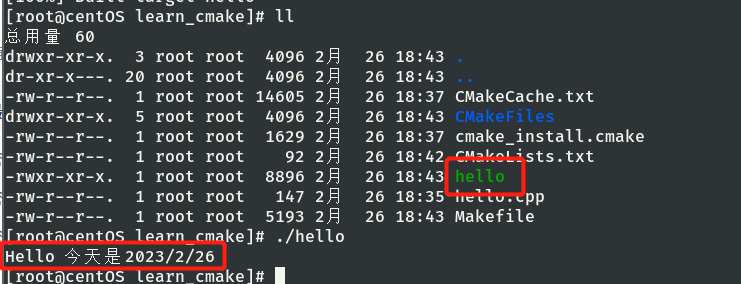
2. Multiple Source Files in the Same Directory
At this point, add two dependencies in the current directory, and the execution of the main function requires these two files
add.cpp
add.h
Simply add the required .cpp files in CMakeLists.txt, the compilation steps are the same as above

3. Many Source Files in the Same Directory
If there are countless source files in the same directory, adding them one by one can be very slow. At this point, you can use a function in CMake to store these source files
aux_source_directory(dir var)
This function stores all the source files in the dir directory into the var variable
Then, wherever the source files are needed, use the variable var instead
At this point, CMakeLists.txt can be optimized like this
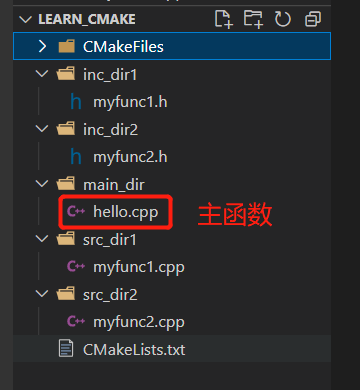
Note: The use of variables is different from Makefile; CMake uses curly braces, such as ${index}
4. Header Files in Different Folders
For centralized header files, CMake provides a very convenient function
include_directories( dir )
This function automatically searches for header files in the dir directory, equivalent to gcc’s gcc -I dir
At this point, CMakeLists.txt can be optimized like this
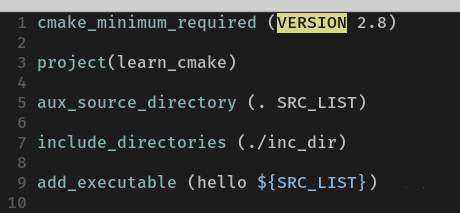
5. Separating Header Files and Source Files, with Multiple Folders

Assuming the current project directory is structured like this, with header files and source files separated and containing multiple folders
Based on the above sections 3 and 4, CMakeLists.txt can be optimized like this
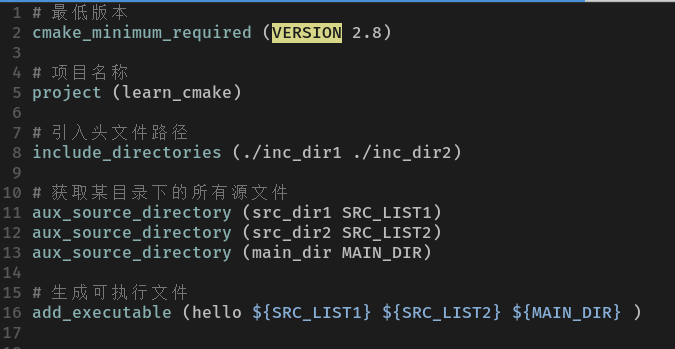
6. Generating Dynamic and Static Libraries
Assuming the current project directory is structured like this
inc directory stores header files
src directory stores source files
lib directory stores generated libraries
build directory stores files related to building the project, such as CMakeLists.txt. We will also execute cmake and make in this directory later
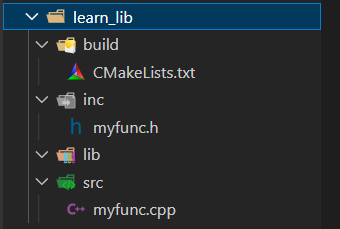
At this point, CMakeLists.txt can be optimized like this

Explanation:
PROJECT_BINARY_DIR is a CMake system variable, meaning the directory where the cmake command is executed. We plan to execute the cmake command in the build directory, so this variable is equivalent to the build directory
add_library(lib_name STATIC/SHARED src) # Function: Generate library.
# Parameter lib_name: Name of the library to be generated,
# Parameter STATIC/SHARED: Specify to generate a static or dynamic library,
# Parameter src: Specify the source files required for generating the library
set_target_properties redefines the output name of the library. If set_target_properties is not used, the library name will be the name defined in add_library. Refer to the official documentation for more details.
LIBRARY_OUTPUT_PATH is a CMake system variable, which means that all generated library files are placed in this directory. Here I specify that the library will be generated in the lib directory.
Start Compilation:
Execute cmake . in the build directory.
Execute make in the build directory.
Check if library files are generated in the lib directory,
If library files appear, the compilation is successful.
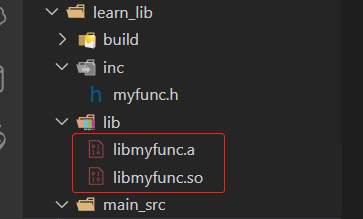
7. Linking Library Files
We have generated library files in the lib directory, now we will write a main function to use the library files
Directory structure as follows:
lib directory stores static and dynamic libraries
main_src directory stores source files related to the main function
bin directory stores the generated executable files
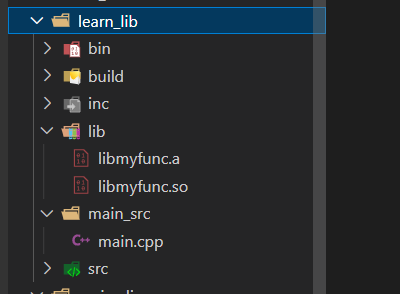
At this point, CMakeLists.txt can be written like this

Explanation:
EXECUTABLE_OUTPUT_PATH is a CMake system variable, meaning the directory of the generated executable file. I changed it to the bin directory, so the generated executable file will appear in the bin directory.
find_library(var lib_name lib_path1 lib_path2) # Function: Find the library and store its absolute path and name in the first parameter
# Parameter var: Used to store the found library
# Parameter lib_name: Name of the library to search for, defaults to searching for dynamic libraries. To specify searching for dynamic or static libraries, you can add suffixes, such as funcname.so or funcname.a
# Parameter lib_path: The paths from which to search for the library, multiple paths can be specified
target_link_libraries(target lib_name) # Function: Link the library lib_name to the target executable file

For course inquiries, add: HCIE666CCIE
↑ Or scan the QR code above ↑
If you have any technical points and content you want to see
You can leave a message below to let me know!